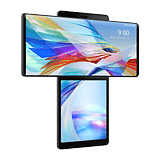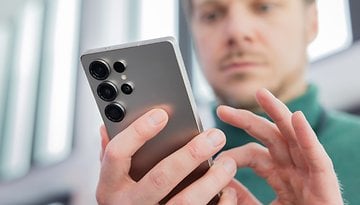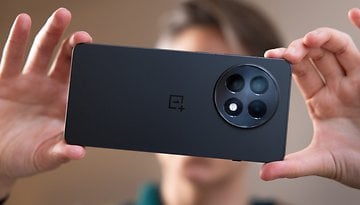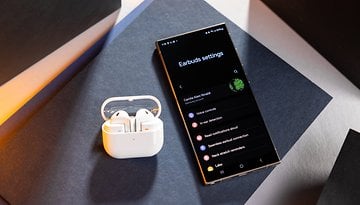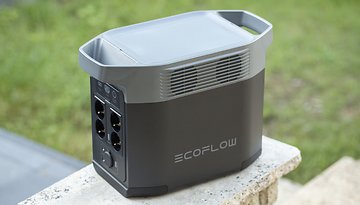LG Wing review: weird, fun, and surprisingly usable
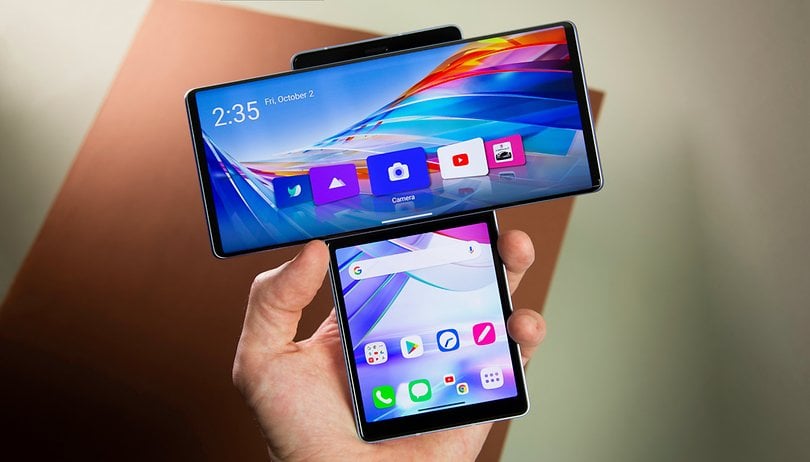

The first device from LG's new Explorer Project is here. The LG Wing is like nothing we've seen in the smartphone industry so far, and that's a good thing. For those who hark back to the days when mobiles were crazy and weird, the Wing is almost nostalgic. But is the swivel design practical in everyday use? Here’s our full review.
Good
- Excellent display
- Great for video recording
- Great for drivers
- It's fun!
Bad
- Slightly unwieldy
- Uninspiring partnerships for western audiences
- LG UX not for everyone
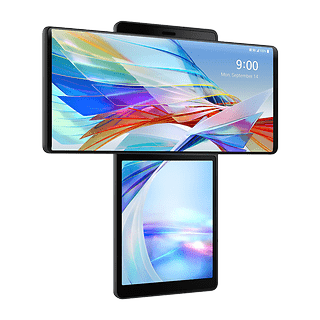
LG Wing release date and price
The new LG Wing launched in South Korea this month, soon to be followed by releases in North America and Europe. In the USA, where sales start on October 15, the price is fixed at $999. The price in Europe is €1,099, but we still don't have an exact release date for you. Whether or not this comes to other European regions, such as the United Kingdom, and a what price, we'll have to wait and see. The phone will come in two colors, Aurora Gray and Illusion Sky.
What is like to use the new LG Wing?
LG was kind enough to send us a pre-production device out of South Korea for our initial hands-on review. As a result, we couldn’t run any benchmarks on this LG Wing or go deep into the camera performance. However, we have now received the full retail version and it’s that unit that I’ve been using for this final review.
I am now able to judge how this, the first fruits of the Explorer Project, will work in daily usage if you actually go out and buy one. So without further ado, let's address the main questions.
How does it feel to swivel?
The defining feature of the LG Wing is its 6.8-inch 20.5:9 FHD+ P-OLED display that swivels between portrait and landscape mode. The same way that a foldable phone is DOA if it doesn't feel good to open and close, if you are going to create a rotating display you'd better make sure it's smooth and sturdy.
The LG Wing incorporates technology such as a Dual Spring, Dual Lock, and Hydraulic Damper in the rotating hinge to achieve a sturdy, premium feel. And it does feel premium. It's got that snappy feel to it. Flipping the screen into landscape mode can be done with one hand no problem and there's a catch mechanism just before it's fully swiveled that slows down the momentum. It's much like the system you get on some kitchen drawers to stop them slamming shut. It's the little touches that make a difference here.
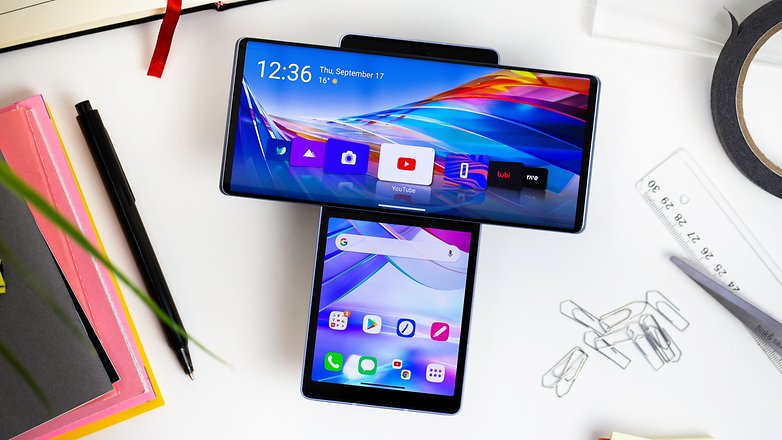
LG says the Wing was designed to withstand rigorous and reliable quality and durability testing, including being dropped from various angles in both its standard and swivel form, stress tests, shock tests as well as a touch sensor, and keypress tests. Passing the bend test was of particular importance to LG Wing engineers, which the device apparently did with ease, and the marketing materials state the hinge has been rotated more than 200,000 times without problems. Zack Nelson has since torn this one down on his YouTube channel - go and check it out if you are interested in the tiny Hydraulic Damper in detail.
High lubricity thermoplastic polyoxymethylene is utilized between the two displays to prevent scratches and damage when swiveled, and on the whole, I have to chalk this one down as a win. For a first-generation swivel mechanism, LG has nailed this.
There's a slightly unveiling sound effect accompanying the swivel motion and the optional is on by default. Most customers will be straight over to the settings to turn this off I imagine, which can be be done via Settings > Sound > System Sounds > Swivel Up/Down.
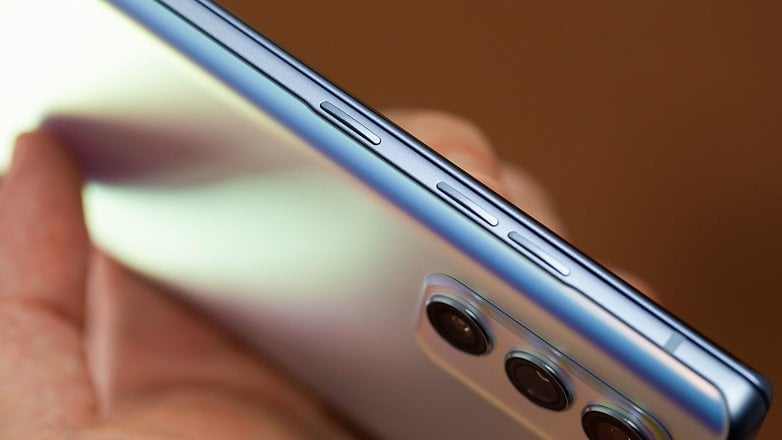
The pre-production we received was final hardware and, therefore, there is little to add here for the full retail version. The swivel screen still feels fantastically fluid and switching from vertical to horizontal mode just never gets old, trust me.
Is the form factor actually useful?
There are several advantages to have a screen that swivels horizontally but perhaps the stand-out feature for me is the Gimbal Motion Camera. In Gimbal Mode, you have access to First Person View, Pan Follow, and Lock camera features. Additional functions typically found on real gimbal devices are also included, such as a zoom, a joystick, and an audio button that captures the best sound possible. The Gimbal Motion Camera utilizes three different axes - pitch/tilt for up and down movement, yaw/pan for left and right movement, and roll to capture off-center or unlevel subject. All of this is meant to allow you to shoot smoother footage.
Is the Gimbal Motion Camera as good as a real, external gimbal? No, but that's really not the point. The Wing is not about replacing professional video camera equipment, it's about having fun and being creative. YouTube-famous Zach King made a short magic video using the Wing for LG's keynote and whilst he is unlikely to be switching to the smartphone for future productions, aspiring video tricksters might just get started with a phone like this.
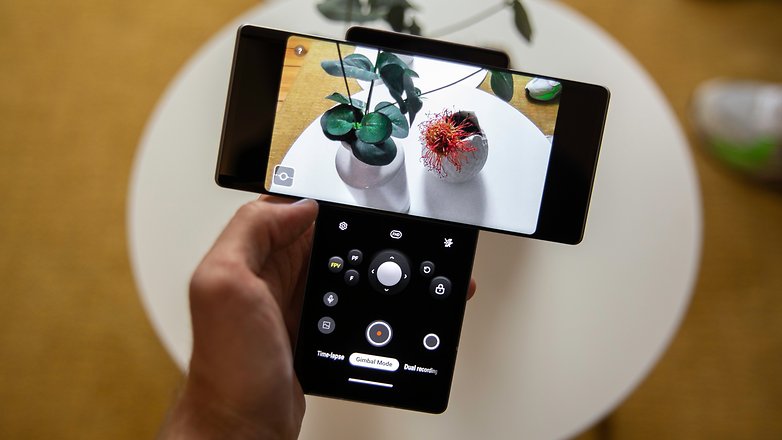
Dual Recording
You can capture two videos at once with both the front and rear cameras in Swivel Mode. Dual Recording is designed for those who want to record a scene and their reaction at the same time. Again, the target market - YouTubers and social media influencers - is clear here.
Editing Palette
You can use the second screen as an editing palette while the video is shown in full on the main screen, reducing the time and effort to produce and share your creation. This feature works well for editing video on-device. Shoot and share whilst out and about, that's the vibe here. LG is going after an ever-growing audience of young wannabe content creators, and it's hard to argue with the vision when you see how much work has gone into it.
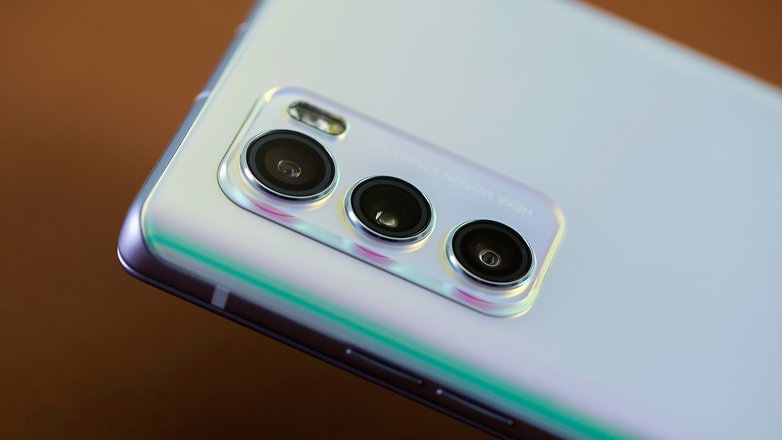
When browsing your photo gallery, you can select the next picture on the second screen to see it in full view on the main screen. Selecting the best shots from your photoshoot feels intuitive, and once again will appeal to those at which the Wing is so clearly aimed at.
LG is calling its suite of camera and editing tools the LG Creator’s Kit. It's not all about the swivel screen, with things like 2x Zoom Bokeh and 2x Crop Zoom joining the party. We'll be back with a full camera review shortly, but my first impressions are positive. There are tonnes of smartphones out there that take great photos and shoot good-quality videos, but there are few that put this level of creativity at the forefront of the experience.
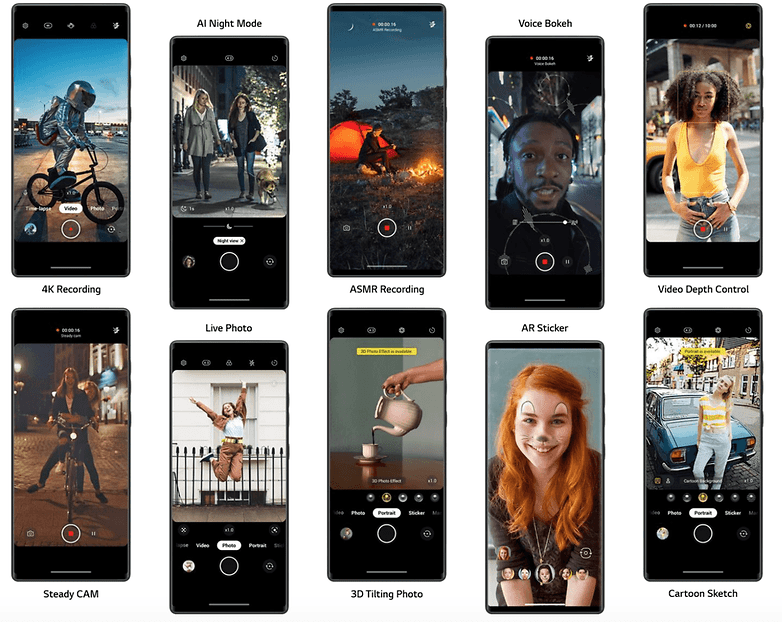
Results during my testing were not mind-blowing beautiful, but as I said, that’s not the point. Does my $349 Google Pixel 4a take basic pictures? Sure it does! Will smarter and more creative people than me be able to make wonderful creations on the Wing that are not possible on 99% of other phones, absolutely!
Gaming
There are also some gaming features that use the second screen of the LG Wing. Gameloft worked closely with LG to offer an in-app expansion to its game, Asphalt 9: Legends. Essentially, you can a mini-map is displayed on the second screen whilst you race on the main screen. The smaller screen will also display stats and driver information. The gaming applications are not as appealing as the video camera and content creation stuff in my opinion, but if you're going to go with this form factor, it's nice to have some use for it when playing mobile games. We'll have to wait and see what developers come up with in the future though before we can really evaluate the benefits.
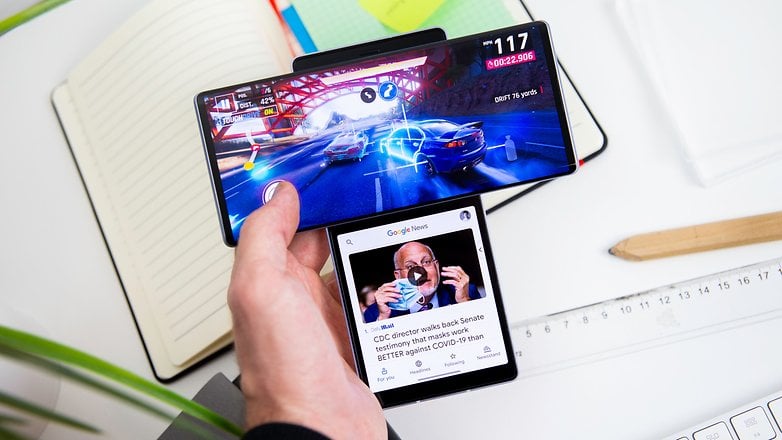
Performance in general is good on the LG Wing. It's worth remembering, however, that we're talking about a Snapdragon 765G from Qualcomm, not the latest Snapdragon 865+ or anything like that. This is the same SoC you get in the OnePlus Nord or the Realme X50 5G. And yet, it's perfectly capable of handling the demands of the camera and the all the dual-screen stuff that gives this phone its personality. With 8GB of RAM and expandable storage, you should have no concerns regarding the memory.
LG Wing benchmark comparison:
| LG Wing (765G) | Realme X50 5G (765G) | OnePlus Nord (765G) | |
|---|---|---|---|
| 3D Mark Sling Shot Extreme ES 3.1 | 2523 | 3335 | 3219 |
| 3D Mark Sling Shot Vulkan | 2363 | 3108 | 3002 |
| 3D Mark Sling Shot ES 3.0 | 3559 | 4641 | 4425 |
| Geekbench 5 (Simple / Multi) | 575 / 1767 | 620 / 1923 | 605 / 1936 |
| PassMark Memory | 20637 | 22282 | 21799 |
| PassMark Disc | 42775 | 57078 | 64489 |
What about the rest of the phone?
Naturally, none of this cool content creation stuff matters if the LG Wing cannot function as your main device. Unlike with foldable smartphones, where often regular smartphone functionality is compromised to make room for the bigger display - I'm looking at you, Samsung Galaxy Z Fold - the Wing feels like a surprisingly normal and, dare I say it, boring smartphone when the swivel screen is in the closed position.
This is actually a positive in my opinion. Sure, it's not the slimmest and lightest smartphone on the market but I was surprised how much it felt like a regular phone when you're just going about your daily business. You can't feel the gap between the screens under your fingers when swiping in from the sides of the display, but I did experience a very minimal bit of movement when tapping the screen at the extreme right edge.
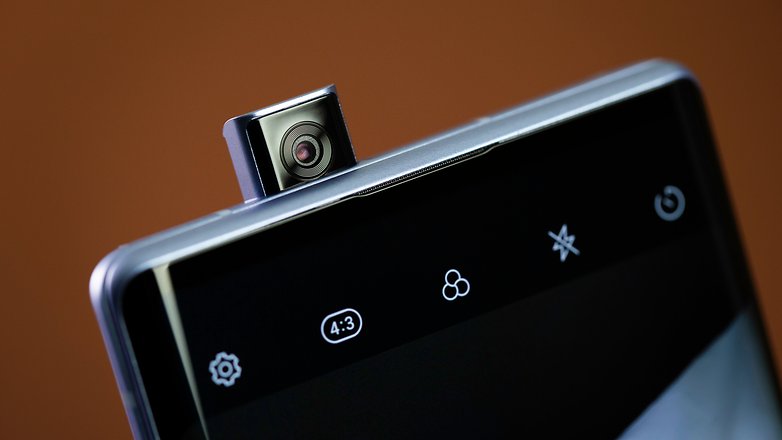
You would think the 4,000 mAh battery would be a concern with the whole two-screen thing and the heavy focus on the camera and, in particular, video recording. Shooting video is a battery life killer and with the video features baked into the Wing, it's clearly one of the main reasons someone would buy one of these. However, the Wing was lasting almost 10 hours before it needed to be charged during my testing... not bad.
It's a shame there's no 3.5mm jack with LG's famous Quad DAC onboard. We saw LG take this out of the Velvet earlier this year, but on a phone as expensive as the Wing, it would have been nice to have. Audio is just as important as video when it comes to content creation, and that Quad DAC sound would have made sense to have for me.
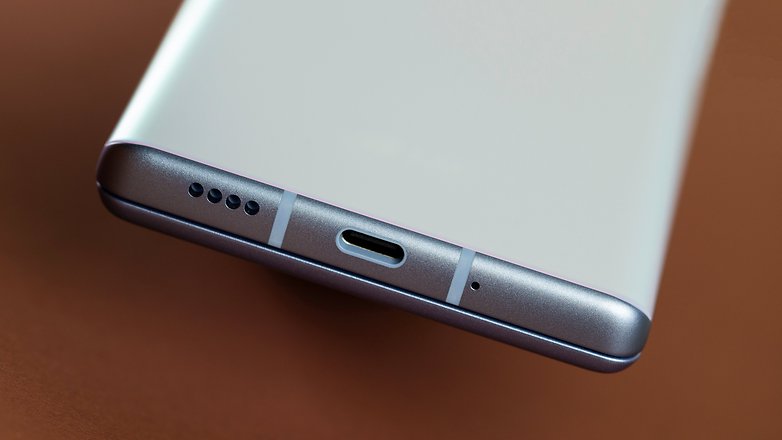
LG Wing technical specifications
Final verdict
The LG Wing is not really a smartphone you can judge by the normal parameters. Whilst it has the performance and features of a regular daily driver, the Explorer Project device is not going to be judged on things like benchmarks or battery life. The Wing is about experimentation, content creation, and having the balls to do something completely different - and I love that about it!
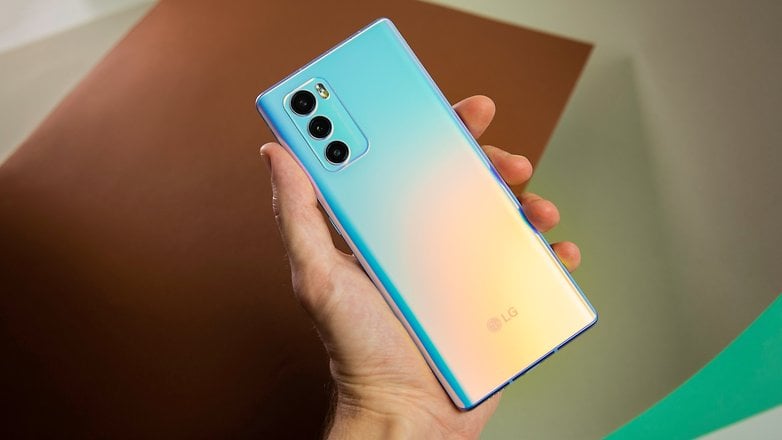
Sure, you'll get some strange looks if you watch YouTube on this on the subway, but for a generation obsessed with shooting videos to share on social media, the Wing provides a genuinely impressive toolkit for creativity. Add to that the fact that LG is only charging consumers 'normal' flagship smartphone prices for this - whereas those stepping into the foldable market are charging more-or-less double - and the Wing suddenly looks like a semi-viable option for someone who wants to break the dull, monotonous cycle that has become purchasing a new smartphone.
One thing is clear in my mind - LG is doing its best to make the mobile space fun and exciting again, and for that, I have only praise to offer. The Wing is not going to be a smartphone for everyone, but for content creators or those who just want to use their phone to create fun videos, the Wing offers something cool and different and is no more expensive than a 2020 flagship.
